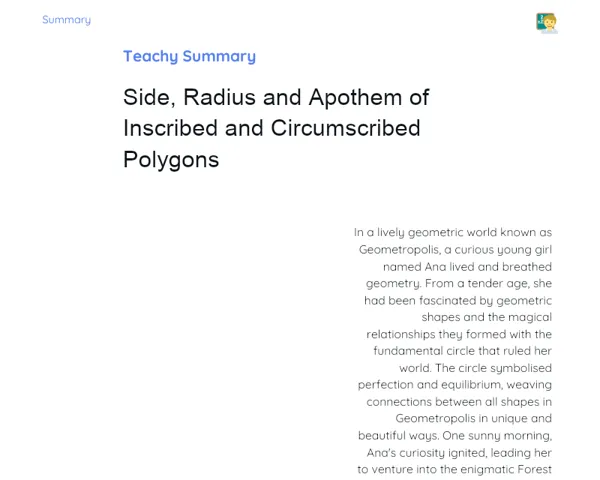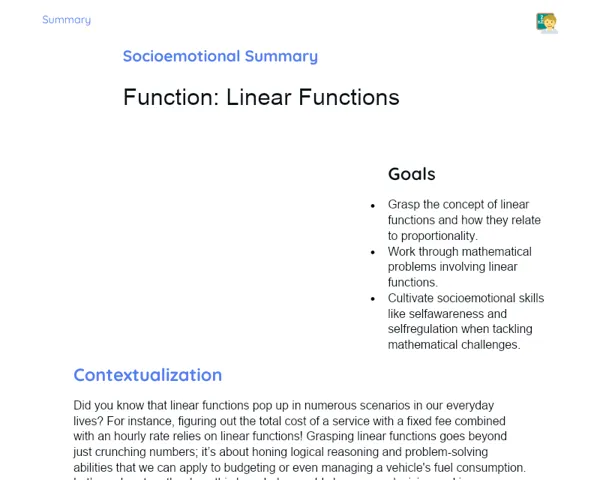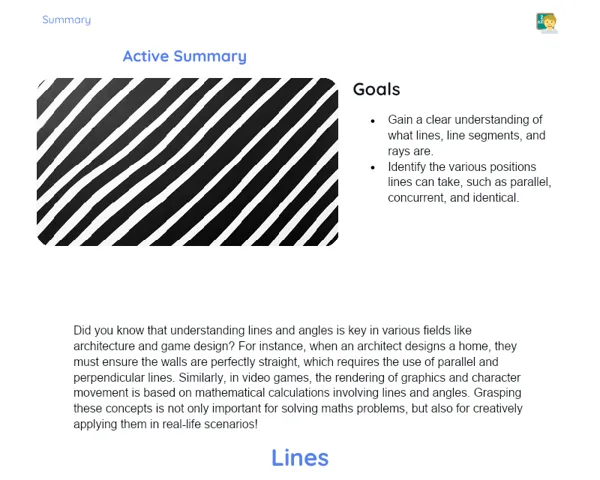Goals
1. Grasp the idea of point, line, and plane.
2. Understand Euclid's postulates.
3. Recognize the key relationships between lines and planes.
Contextualization
Spatial geometry is a core aspect of mathematics that deals with shapes in three-dimensional space. It's essential for grasping the structure of the world around us. From the design of buildings to satellite navigation, spatial geometry is pivotal. Knowing how points, lines, and planes interact aids in tackling practical and complex issues across various sectors of our daily and professional lives. For instance, civil engineers use these principles to create safe and functional buildings, while architects depend on them to generate visually appealing and feasible designs.
Subject Relevance
To Remember!
Point
A point is the simplest unit of geometry, representing a location in three-dimensional space. It has no dimensions; it doesn’t possess length, width, or height. Even though it seems straightforward, the concept of a point is foundational, serving as the basis for all other geometric constructs.
-
Represents a location in space.
-
Has no dimensions.
-
Forms the basis for defining other geometric elements like lines and planes.
Line
A line is an endless series of points arranged in a single direction. It is one-dimensional and extends infinitely in both directions. In spatial geometry, lines are crucial for defining relationships between various points and planes.
-
Is one-dimensional.
-
Extends infinitely in both directions.
-
Is made up of an infinite number of points.
Plane
A plane is a two-dimensional surface that stretches infinitely. It's defined by three non-collinear points and can include countless points and lines. The idea of a plane is vital in spatial geometry for understanding relationships between different three-dimensional shapes.
-
Is two-dimensional.
-
Extends infinitely.
-
Is defined by three non-collinear points.
-
Can contain countless points and lines.
Euclid's Postulates
Euclid's postulates are a set of five foundational axioms that underpin Euclidean geometry. They set out the basic rules regarding points, lines, and planes, facilitating the development of theorems and geometric proofs.
-
Are five basic axioms.
-
Establish fundamental rules about points, lines, and planes.
-
Enable the creation of theorems and geometric proofs.
-
Form the foundation of Euclidean geometry.
Relations between Lines and Planes
The relations between lines and planes are essential for understanding how different geometric elements interact in three-dimensional space. These relations include parallelism, perpendicularity, and intersection, which are fundamental for solving practical challenges in fields like engineering and architecture.
-
Include parallelism, perpendicularity, and intersection.
-
Are key to understanding the interaction between geometric elements.
-
Essential for addressing real-world challenges in engineering and architecture.
Practical Applications
-
Civil Engineering: Applying spatial geometry concepts to design safe and functional structures, such as bridges and buildings.
-
Architecture: Utilizing points, lines, and planes to create aesthetically pleasing and functional designs in construction.
-
3D Modelling: Employing spatial geometry in crafting animations for movies and video games, ensuring precision and realism in models.
Key Terms
-
Point: A fundamental element of geometry representing a location in three-dimensional space with no dimensions.
-
Line: An infinite series of points in a single direction; one-dimensional and extending infinitely.
-
Plane: A two-dimensional surface that extends infinitely, defined by three non-collinear points.
-
Euclid's Postulates: Five foundational axioms that dictate the basic rules regarding points, lines, and planes.
-
Parallelism: The relationship between two lines or a line and a plane that never meet.
-
Perpendicularity: The relationship between two lines or a line and a plane that intersect at a 90-degree angle.
-
Intersection: The point where two lines, or a line and a plane, cross.
Questions for Reflections
-
How does understanding points, lines, and planes affect precision in engineering and architectural projects?
-
In what ways are Euclid's postulates still relevant in modern technological applications, like 3D modelling?
-
What hurdles arise when applying relationships between lines and planes in practical scenarios, and how can we address them?
Geometric Construction Challenge
To reinforce your understanding of points, lines, and planes, you will craft a complex geometric figure using everyday materials.
Instructions
-
Form groups of 3 to 4 individuals.
-
Utilise skewers and modelling clay to construct a structure that features at least one point, one line, and one plane.
-
Make sure the structure is stable and that the geometric concepts are clearly represented.
-
Each group will showcase their structure to the class, explaining how they incorporated the concepts of point, line, and plane.
-
Reflect on the challenges experienced during construction and how you addressed those issues.



